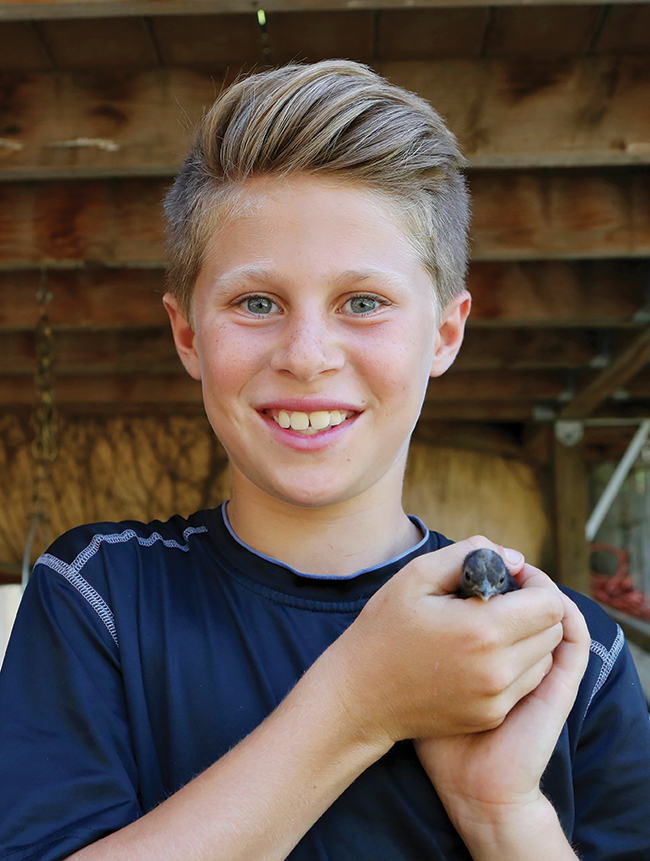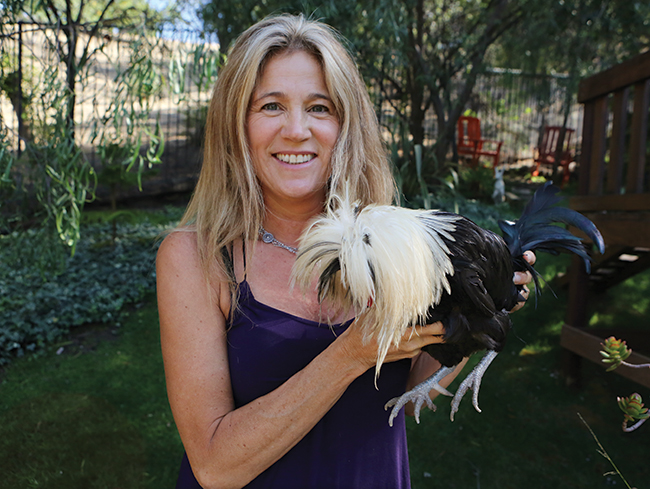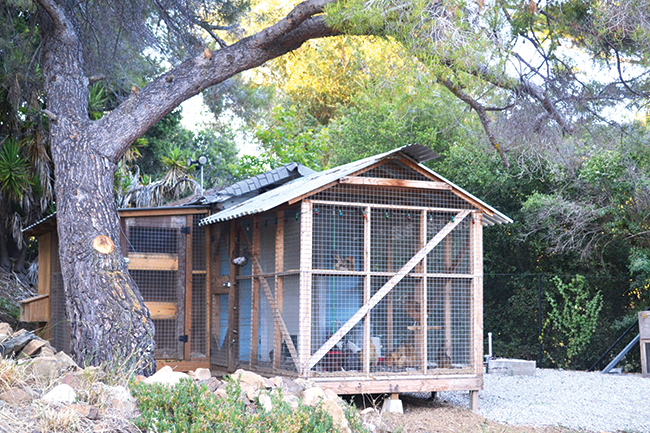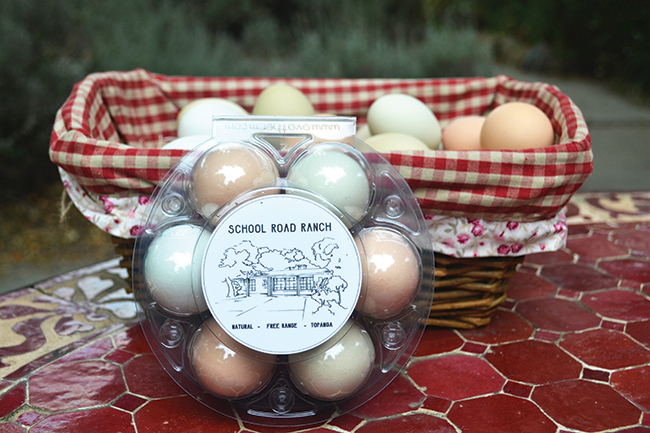
Flying the Coop
Two Valley families on what it takes to build and run a home chicken coop.
-
CategoryPeople
-
Written byLinda Grasso
Sam Geiger, age 11, has always loved eggs. “He eats eight a day sometimes!” quips his mom, Tricia. That, in part, sparked the construction of the chicken coop at their hillside home in Sherman Oaks. “Plus I wanted to be able to do something with the boys (older brother Ben is 15), and I wanted to be able to teach them to be gentle and kind and to take care of something,” Tricia explains.
For Mark and Jil Benson, owning a chicken coop at their Topanga home morphed out of a love of gardening. “We already had a worm composting station as well as a drum compost bin, so the addition of the chicken manure felt natural. Now we give them all of our leftover fruit, pasta, rice and vegetables as well as letting them roam freely on the property, under our watchful eye. We probably have only one bag of trash per week, at the most two, for a family of four,” says Jil.


Their flock is housed in a former shed on the property. “We converted it and added a covered run. The biggest challenge is to make it rodent-proof, animal-proof, weatherproof,” Mark explains.
Mark, who works as a production designer, and Jil sell their eggs (with the label School Road Ranch) at the local market Canyon Gourmet. They currently have 13 laying hens. The group includes Americanas, which lay blue and green eggs, Buff Orpingtons, which lay pink eggs, Light Brahmas, which lay light brown/speckled eggs, and Barred Rocks, which lay brown eggs.
Seventeen baby chicks just hatched. They’ll begin laying eggs in November. “We are excited to get in the new batch, some Olive Eggers and Cuckoo Marans, which lay the darkest, chocolate-brown eggs,” Mark shares.


Mark cautions that running a coop, which requires daily maintenance, is not for everyone. But for the right person or family, it can be rewarding. “You get great eggs and great compost; it’s all part of the bigger picture of recycling, growing your own vegetables, cutting down on waste.”
The big picture for Sam Geiger also includes learning the basics of being an entrepreneur. The Curtis School fifth-grader has recently started selling cartons to friends and neighbors with his business, aptly titled Green Eggs and Sam.
Considering a Coop?
School Road Ranch’s Mark Benson shares some expert advice.
Do Your Research
Read Storey’s Guide to Raising Chickens by Gail Damerow. “It should be read cover to cover before you even think of having chickens,” shares Mark. Also check out the website backyardchickens.com. “For us, it was handy as a forum, talking with other chicken owners. Also good for ordering the different breeds we wanted in our flock.”
Note The Negatives
Chickens can attract flies and make a fair bit of noise. Also worth noting: After two or three years chickens stop laying on a regular basis. So be prepared to house pets or adopt out.
Make Coops Predator-Proof
A key predator is the climb-ing, nocturnal raccoon, which can open simple latches and even grab chickens through chicken wire. Instead of standard chicken wire, Mark suggests using ½-inch square mesh, which also keeps out mice, rats and snakes. Structures also need to be strong enough to take the impact of a coyote or large dog. “I basically constructed the run with 2×4 studs, similar to a framed house wall, with headers to hold a sturdy metal roof, and put the small mesh on the inside and a much stronger 2-inch square wire
on the outside.”
Install Water and Electricity
“It makes it much easier, with automatic water bowls and timer lights for the winter months, if you want eggs in December!” says Mark.











